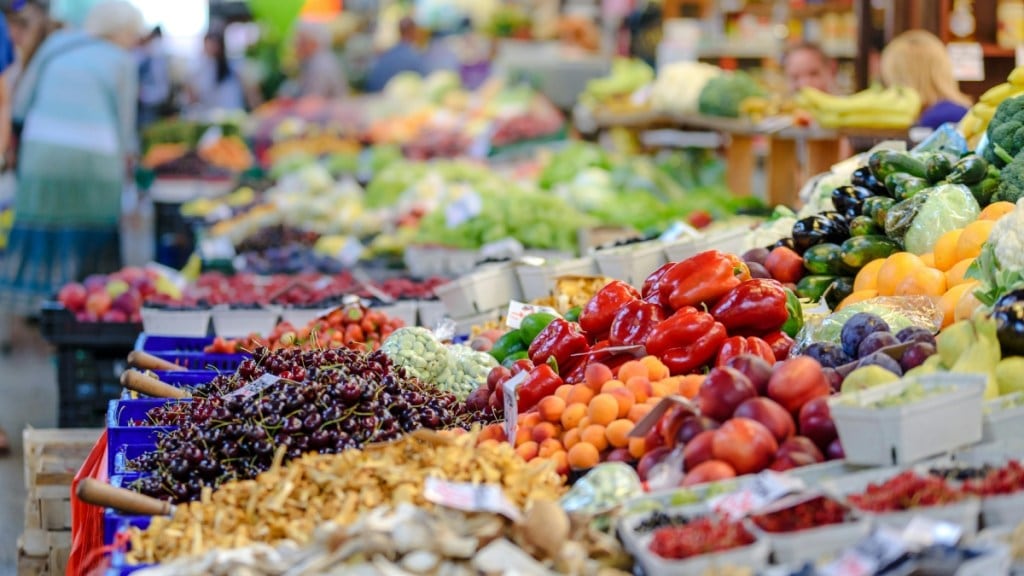India’s retail inflation, measured by consumer price index (CPI), eased to a five-year-and-seven-months low of 3.34% in March from 3.61% in February, as food prices eased markedly. This, analysts feel, would give the central bank headroom for rate cut of another 50 basis points or more in FY26 to support growth.
The lower-than-expected inflation print augurs well for the economy, amid still-sluggish urban consumption, and fears of adverse impact of the global tariff war on aggregate demand. The income tax cuts announced in the Budget, and a monetary transmission under way with many leading banks cutting their lending and select fixed deposit rates, are likely to give a short-term boost to consumption.
A sharp decline of 106 basis points was observed in food inflation in March 2025 in comparison to February 2025, according to the data released by the National Statistical Office (NSO) on Wednesday. Food inflation, at 2.69% in March 2025, was the lowest after November 2021.
Core inflation, however, held firm at 4.1% in March, marginally higher than 4% in February; in fact, the sub-index for non-food-non-manufactured items created by independent analysts, has been looking up since December 2024 with sharper year-on-year rises. Core inflation excludes volatile items like food and energy and is a better gauge of domestic demand.
Notably, rural inflation fell sharply from 3.79% in February to 3.25% in March, while urban inflation inched up from 3.32% to 3.43%. The latest inflation print is the lowest since August, 2019 (3.28%).
The significant decline in inflation print is mainly attributable to a drop in inflation of vegetables, eggs and pulses, among others. With the next inflation print is also expected to be sub-4%, analysts expect another policy interest rate cut in its June monetary policy committee (MPC) meeting. Currently, global prices are subdued, but there are fears of the tariff war, if unchecked, causing a global inflationary spiral over the coming months. To be sure, the US inflation cooled to an annual rate of 2.4% in March from 2.8% in February.
On April 9, Reserve Bank of India (RBI) cut the repo rate by 25 basis points to 6%, which took taking the cumulative cut in the last two MPC meetings to 50 bps. The MPC also decided to change the stance from “neutral” to “accommodative” and lowered its inflation projection for FY26 by 20 bps to 4%.
Given the exacerbated uncertainties due to the tariff war, RBI has reduced its real GDP growth projection for FY26 by 20 bps to 6.5%.
“Sharp decline in inflation expectations in our latest survey for three months and one year ahead would also help anchor inflation expectations, going ahead. Furthermore, the fall in crude oil prices augurs well for the inflation outlook,” RBI governor Sanjay Malhotra said on April 9.
Vegetable prices fell over 7.04% on-year in March, compared with an over 1.07% increase in February 2025. In March 2025, pulses prices fell 2.7% on year, and egg prices fell 3.15%. Prices of cereals rose 5.93% in March, while milk/milk products’ prices rose 2.6%. Fruits segment also saw a big rise (16.27%).
Interestingly, the fuel and light category exited deflation after staying in the zone for 18 consecutive months. However, this trend in fuel and light is unlikely to be sustained as electricity discoms of some major states have slashed electricity prices, said Rajani Sinha, Chief Economist, CareEdge.
“We expect a further 50 bps reduction in the policy rate in FY26. The possibility of the RBI’s rate cut cycle being even deeper cannot be ruled out if the global trade uncertainties severely dent growth prospects,” Sinha said. The recent moderation in the dollar index and expectations of more Fed rate cuts place the RBI in a better position to undertake further reductions in the policy rate, Sinha added.
“In our view, further monetary easing is clearly on the table, to the tune of 50 bps over the next three policies. With the next inflation print also expected to be sub-4%, a June 2025 rate cut seems highly likely, unless Q4 FY2025 GDP growth surprises sharply to the upside,” Icra chief economist Aditi Nayar opined.
Bank of Baroda chief economist Madan Sabnavis said the latest inflation number is in line with the RBI expectation and if it proceeds in a similar manner in FY26, “we can expect another 50 bps cut in repo.” “Food inflation was low but was kept higher due to edible oils where inflation was 17% and fruits 16.2%. The former will continue to exert pressure as it is determined by international prices as well as exchange rate,” Sabnavis said. The high base effect has helped to moderate the inflation numbers and this comfort will be there for the next 3-4 months, he said.
It should be remembered that LPG prices have increased by almost 8% in April which can add a marginal 0.1% to inflation in April number, Sabnavis said.
